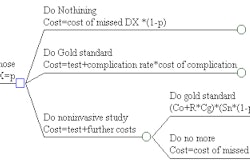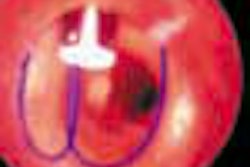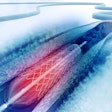BALTIMORE - Using an automated power injector to perform intra-arterial gadolinium magnetic resonance angiography (MRA) can lead to injections that are significantly less accurate than would have been expected, according to a study out of Northwestern University Medical School in Chicago.
The research team used the Spectris device (Medrad, Indianola, PA) for their experiment, carried out in a model system under a variety of scenarios. The Spectris power injector was designed for conventional intravenous injections, and its accuracy during intra-arterial use has never been tested before, they said.
"This injector just wasn’t designed for IA use," said Dr. Reed Omary in a presentation Sunday at the Society of Interventional Radiology (SIR, formerly SCVIR).
Omary’s group has been studying intra-arterial MRA contrast as an alternative to intravenous administration for MR imaging-guided endovascular procedures. Multiple injections of contrast are required during these procedures, and if an intravenous approach is used, the volume of contrast could exceed current FDA guidelines. By injecting gadolinium intra-arterially, smaller doses can be used, according to a study published in Academic Radiology (February 2002, Vol.9:2, pp.172-185).
In the paper that Omary presented at SIR, the group used an aorto-renal-iliac flow phantom attached to a pressure pump, and the researchers performed 750 injections. Accuracy was defined as the degree to which the injector matched its nominal injection rate when delivering gadolinium.
The accuracy of the injection was impacted by the catheter type, as well as the injection volume and rate. End-hole catheters were significantly more inaccurate than pigtail catheters, and faster injection rates led to a marked decrease in accuracy. At 1 mL/s, the injector was 98% accurate, while at 10 mL/s, accuracy dropped to 53%. Smaller injection volumes were also more likely to lead to inaccuracy.
Flow rate did not appear to impact the accuracy of the device, though using a saline push and lowering concentrations of gadolinium were both associated with higher accuracy.
Still, the researchers cautioned that the study did not address the clinical impact of the findings. "The effect on image quality of the inaccuracy is still unknown," said Syan Vasireddy, a Northwestern medical student and a study co-author.
Though intra-arterial gadolinium angiography is not approved for use in the U.S., the procedure has benefits in that it can rapidly sketch out the vasculature of the heart. The researchers said that the findings underscore the importance of developing tools specifically for intra-arterial use.
By Brian ReidAuntMinnie.com contributing writer
April 11, 2002
Related Reading
SCVIR adopts new name, April 9, 2002
Copyright © 2002 AuntMinnie.com



















